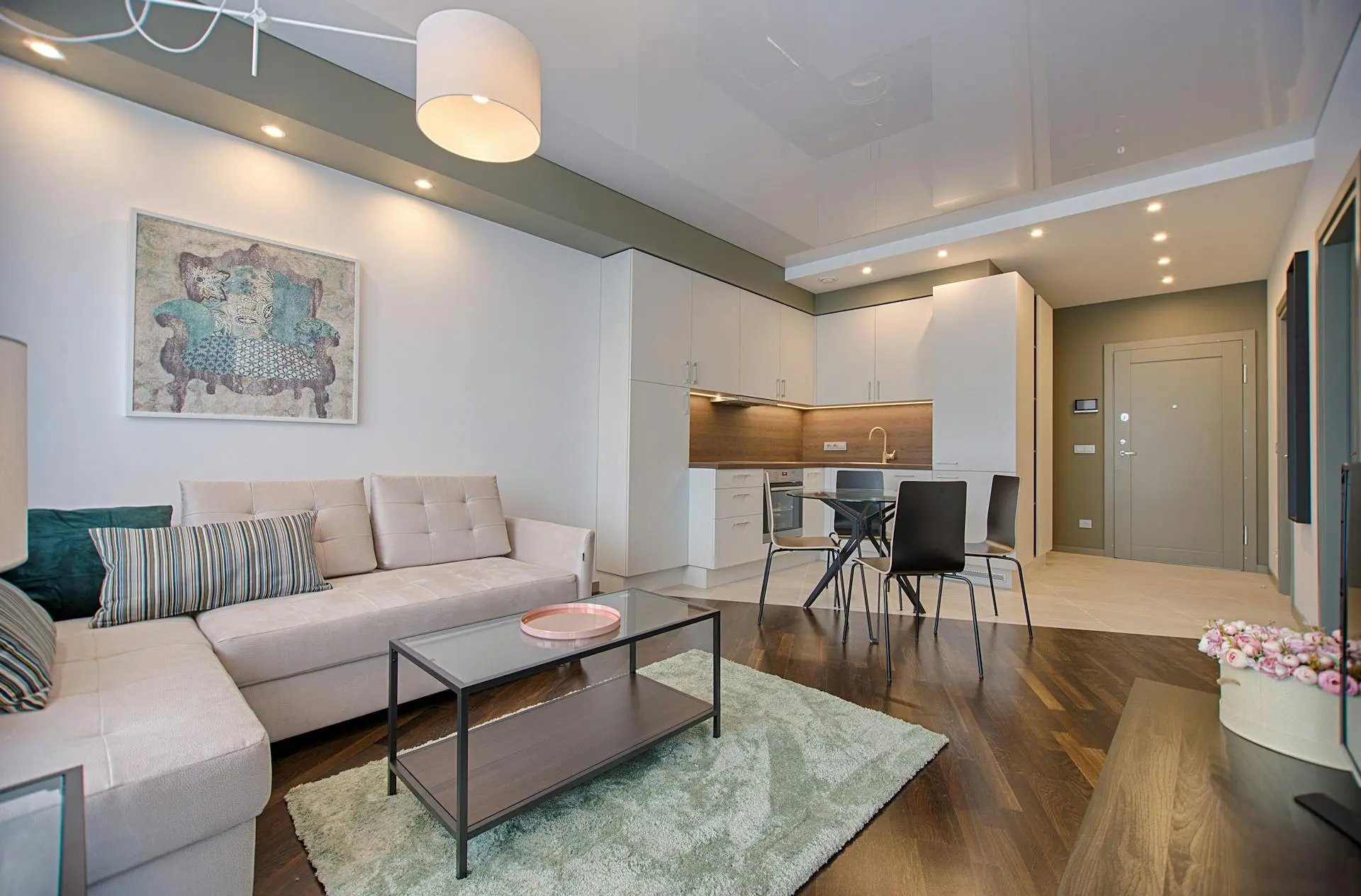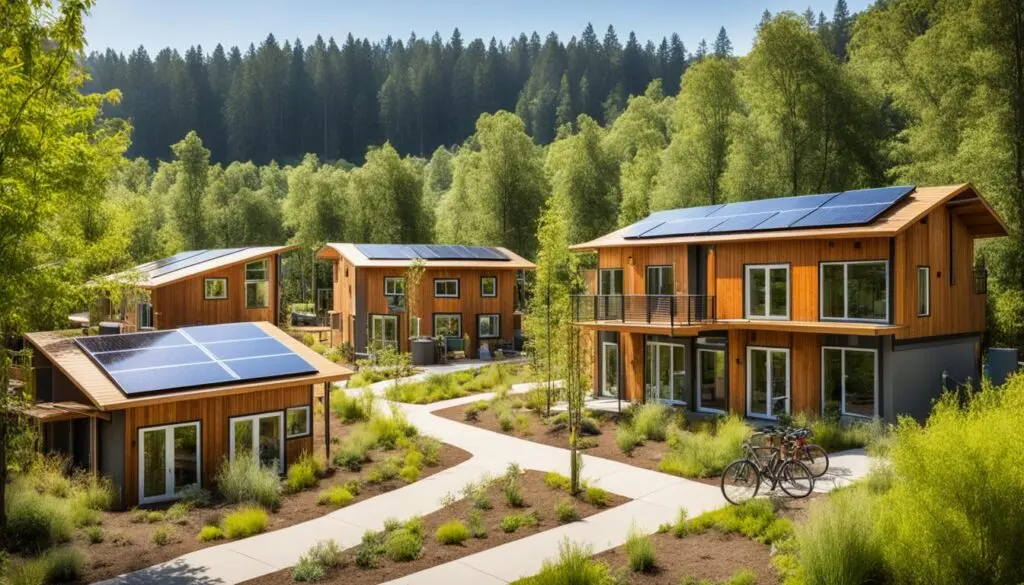Architectural styles underpin the entire design of your home. Whether you’re looking to build a new home, or renovate an older build, understanding the different styles can help you design a cohesive space.
While styles can come and go, there are some that have stood the test of time. From the maximalist appeal of Art Deco and Gothic to the sleek look of the 21st Century, these styles shape every decision from flooring to the appliances, room layout and of course home decor.
Together we’ll explore some popular architectural styles and provide practical tips to turn your new home into the perfect match for your personality and lifestyle.
Modern minimalist magic
If your idea of a beautiful home is an expanse of clean lines and open spaces then you should look to contemporary and minimalist designs.
Contemporary
Contemporary design is constantly evolving to reflect the trends and aesthetics of changing design ideas. With a focus on clean lines, smooth surfaces and a mix of materials, contemporary spaces often feature neutral tones with bold accents. Contemporary design is all about incorporating new materials, technology and trends such as luxury vinyl plank and smart home electronics.
Minimalist
Minimalist is similar, with a focus on simple style and a less-is-more aesthetic to create a home that is visually uncluttered. It prioritises functionality, ensuring that each design element has a purpose. With minimalist furniture that is more functional than fancy, natural light takes centre stage creating a bright and welcoming space.
Traditional elegance of classic styles
Classic architectural styles like Victorian and Georgian each have their own distinct characteristics. However, they also share many common features such as use of symmetry, ornate details, and timeless elegance. Let’s take a closer look.
Victorian
A key feature of Victorian architecture is in ornate detailing. You’ll often see vibrantly coloured homes adorned in patterned wallpaper, intricately carved wooden embellishments and stained glass windows. As for flooring, Victorian style consisted of herringbone or chevron pattern wooden flooring, adding a touch of elegance to the space. It was a time and style that embraced maximalism for a warm, inviting feel.
Georgian
Georgian architecture draws its influences from classical Greek and Roman architecture, featuring strict symmetry with centred entrances and balanced classical proportions. Colours were often muted or warm neutrals such as creams, soft blues, and greens to give a calming and serene atmosphere. Polished hardwood floors or even painted wooden floors were common to achieve this aesthetic.
Rustic charm and farmhouse appeal
The simplicity and practicality of rustic and farmhouse architectural styles means their popularity has endured through the ages. These design styles are all about embracing the natural beauty of materials, while evoking a sense of warmth and cosiness.
Both are similar in style with key elements including natural materials, an earthy colour palette and textured surfaces. Think exposed unpainted wood beams, combined with stone benches and floors, and reclaimed materials to create an organic feel. One thing that sets Farmhouse design apart is that it tends to lean more to a refined and polished style, with a neutral colour palette, creating a light and bright space.
Industrial and urban loft vibes
Love the aesthetic of raw, unfinished urban spaces? Look no further than industrial and urban loft design. Characterised for its ‘unfinished’ look, both industrial and urban loft styles create a rugged space.
Brick walls, metal fixtures and concrete, with exposed ductwork and beams define these design styles. Think old warehouses converted to residential space, full of raw textured surfaces with a rugged aesthetic.
This style is often found in repurposed old buildings, and incorporates unique architectural elements that speak to the building’s history and former purpose – such as a fire pole in an old firehouse. These can become focal points and conversation starters for guests, helping add interest and mystique.
Eco-friendly and sustainable designs
Designing houses that are more eco-friendly benefits not just the planet but those living in the house. By focusing on reducing environmental impact you can create a home that is comfortable and costs less to run and maintain.
So, how is it done? One of the key elements are sustainable materials, such as reclaimed wood and metal building materials. Other must-haves are energy-efficient systems. From solar panels and batteries, to high-efficiency heating, ventilation, water tanks and air conditioning (HVAC) systems, you can make the most out of your onsite resources. Another useful tip is to install double or triple glazed windows to help reduce heat transfer through the glass.
Then there’s other design elements to consider, such as bringing nature in with plants and other natural design elements like wood and timber. Things like installing a living plant wall or even having a few potted plants can help improve the air quality and remove pollutants.
Finding what works for you
Keep in mind that these are just a few styles to get you started! There are plenty of different styles for you to consider when designing your next space.
When deciding what architectural style to choose for your new home, remember that there is no right or wrong choice – it’s about what speaks to you and your lifestyle. By understanding what the defining characteristics of different architectural styles are, you learn what elements you want to bring together to create a space that truly feels like your own.
Apart from that if you want to know about “Important Things to Know Before Installing Timber Flooring” then please visit our “Interior Design” Category.



